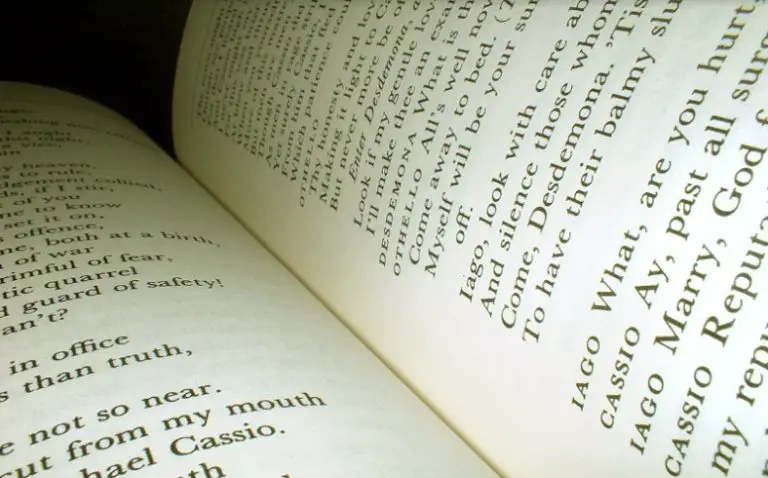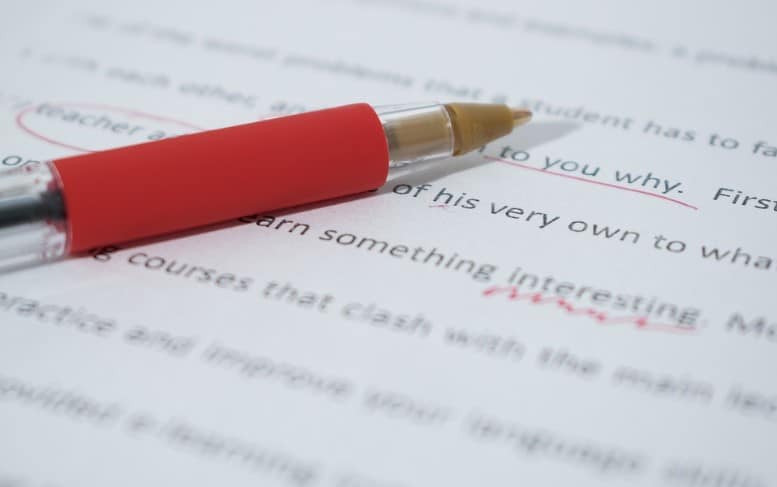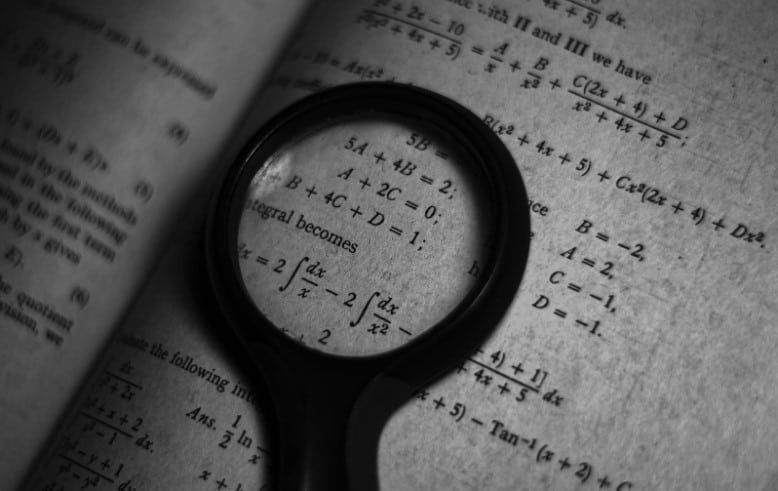SAT Test Sections 2023: Comprehensive Format Breakdown
Are you taking the SAT in a few months? Or, maybe you just want to know what this test is all about? Either way, it is a great idea for you to know its content. If you’re taking the test soon, you’re probably asking:
What does the SAT consist of?
What sections are on the SAT?
How is the SAT structured?
In this article, we break down the SAT according to structure, time breakdown, section times, and question types. Each section measures different skills and abilities, so answering them requires different approaches. We will then look at some tips on how to perform well in each section of the SAT.
So, what’s on the SAT?
Different SAT sections
The SAT is administered to measure how much you learned in high school and to assess your readiness for college. As mentioned, it tests your skills and abilities in different aspects.
There are four SAT test sections:
- Reading
- Writing and Language
- Math
- Essay (optional)
The Math section has two parts: No calculator and With Calculator. Aside from the Essay section, which you may or may not take, all questions on the admissions test are in a multiple-choice format.
How many questions are on the SAT? There are a total of 154 questions + 1 essay question.
The total SAT time is 3 hours if you skip the essay and 3.50 hours if you answer it.
Now, let’s break down the SAT format.
SAT Breakdown
|
Section |
Order on the test |
Number of questions |
SAT test time |
|
Reading |
1 |
52 |
65 minutes |
|
Writing and Language |
2 |
44 |
35 minutes |
|
Math – no calculator |
3 |
20 |
25 minutes |
|
Math – calculator |
4 |
38 |
55 minutes |
|
Essay (optional) |
5 |
1 |
50 minutes |
The table above shows the SAT breakdown of sections, their corresponding number of questions, and SAT time per section.
As you can see, the Math section covers the biggest chunk of the SAT test length with 58 questions. It also covers most of the SAT time length with 80 minutes in total.
What does the SAT test you on? First and foremost, the SAT measures your readiness for college. If we get down to specifics, however, you will see particular topics that are covered.
Check out the chart below to see the different question types you are going to encounter on the test. Also, indicated in the table is the breakdown for scoring on the SAT.
|
Section |
Scoring |
Topics covered |
|
Reading |
200-800 |
|
|
Writing and Language |
200-800 |
|
|
Math |
200-800 |
|
|
Essay (optional) |
2-8 |
Reading and Essay Writing |
The scoring range for the whole SAT is 400-1600, and the scoring range for each section is 200-800. The optional Essay section’s scoring range, on the other hand, is 2-8.
The SAT Reading Section
Let’s look closely at each section of the SAT and the skills being measured in each one.
The first section of the SAT is the Reading section. It measures how well you can absorb, process, and use information. It will test your reading comprehension skills, as well as your understanding of vocabulary in context.
In the SAT Reading section, you will be given 5 passages:
- 1 passage from a classic or contemporary work or world literature
- 1 passage from a U.S. founding document or a text in Global Conversation they inspired
- 1 passage on social sciences
- 2 passages on science
Each passage or set of passages is about 500-750 words long. Some of these come with an infographic, chart, or graph, in which you will be asked to interpret data. There’s also a possibility of having paired passages, which discuss the same theme or topic.
What are the SAT test types for reading? Let’s expound on them one by one.
Reading question types
1. Big picture/Little picture
This type of question will ask you what the main point or the purpose of the passage is. What is the passage about? What is it trying to tell you? A big picture type of question will measure your ability to identify the general idea of the passage.
On the other hand, a little picture type of question will ask you what the purpose of a specific line(s) is/are. What you’ll do here is find evidence that will support the purpose of a specific line or the passage as a whole.
2. Inference
In this type of question, you are asked to basically interpret the meaning of a line or a set of lines. Sometimes, you will be asked to interpret the meaning of the whole passage.
3. Vocabulary/context
Questions on vocabulary don’t need much explaining. This type of question asks you to define a word from the text. However, some words are used in an unusual way, so comprehension is key.
4. Author Analysis
This type of question will ask you to identify and analyze the author’s technique and style of writing. You will be asked about the author’s tone, voice, point of view, and the like.
5. Evidence support
Questions on evidence support will require you to find evidence to support your answer to the previous question. You will have to look for specific lines on the text to answer it.
6. Data Interpretation
As mentioned, some passages will come with sets of data, charts, or a graph. With that said, some questions will ask you to interpret data and identify how it is related to the passage.
Tips and Strategies on answering the Reading Section
1. Read, read, and read.
Since we’re talking about the reading section, is there any better way to practice than reading passages? Read those that are provided in the College Board’s official practice tests (1). Those are the closest you can get to the actual passages given during the SAT.
You should not just simply read those passages, however. As you practice, make sure that you consider how fast you are reading them. The SAT is a timed exam, so you should balance your time reading the 5 passages with the given time for the section. This, of course, should be done without sacrificing your comprehension of the text.
Good sources of passages for reading are The New York Times and The Atlantic. Most passages on the SAT were adopted from these sources.
2. Work on dual passages one at a time.
Dual passages are common on the SAT. These are two shorter passages that are related to each other. One tip in answering the Reading section is to take dual passages one at a time.
It is recommended that you answer questions about the first passage first, then you answer questions about the second passage next. Lastly, you answer questions on both passages. With this, you can avoid confusing the two texts and mixing ideas.
3. Process of elimination
One of the best strategies in answering the Reading section is to eliminate answers that are obviously incorrect. There are four choices for each question, and only one is correct. The other three choices will show clear signs that they are incorrect. Some even have no connection to the question or do not make sense at all. It is a great idea to eliminate these choices.
The SAT Writing and Language Section
The Writing and Language section of the SAT is similar to the Reading section because it also deals with passages. Unlike the Reading section, however, it’s not your reading comprehension skills that are being tested. Rather, it will measure your skills in identifying and correcting grammatical errors.
The passages you’ll encounter in this section are of the same nature as the ones in the Reading section. They cover topics like history, social sciences, humanities, and even career. However, these passages can come in the form of narratives or arguments.
Writing and Language question types
Here are the types of questions that you can expect to encounter in the Writing and Language section of the SAT:
1. Command of Evidence
This type of question will ask you if a particular change or addition to the text should be done. However, it is not just a matter of yes or no. You must find the right evidence on why you should or should not make that specific change.
2. Word change
Questions on word change will ask you which word from the choices would best replace a specific word from the text. There is also a “NO CHANGE” option for this type of question if you believe that there is no need to replace the word on the text.
3. Arrangement of ideas
This type of question will require you to rearrange or combine statements/sentences on the text. Basically, your job will be to find the most appropriate way to combine or rearrange the statements or sentences.
4. English conventions
English-conventions-related questions will ask you to choose a particular phrase or sentence that is more grammatically correct than the underlined one. For this type of question, you will need to have good knowledge of English grammar, punctuation, capitalization, and sentence structure.
Questions on English conventions cover almost half of the SAT Writing section, so you should focus on them as you prepare for the test.
Tips and Strategies on answering the Writing and Language section
1. Work on the questions as you read the passages
The SAT Writing section is composed of 44 questions and has a time allotment of 35 minutes. This means the average time for answering a question is 48 seconds. For more efficient answering, it is recommended that you already identify the error (if there is one) on the underlined phrases or sentences as you read the passage.
2. Choose a relevant but concise answer
There will be instances when you think that two choices would both make complete sense. In this case, try to choose a more concise option. One of the objectives in answering the Writing and Language section is to eliminate wordiness.
3. Master grammar and punctuation rules
As mentioned earlier, questions on English conventions cover a huge chunk of the SAT Writing section. If you want to get a high score on this particular part of the test, it is necessary for you to master your grammar and punctuation skills. You should know the proper usage of commas, colons, semicolons, dashes, and apostrophes.
4. Read well-written essays
One of the best ways to prepare for the Writing and Language section of the SAT is to read plenty of articles and essays. Newspapers, journals, magazines, and persuasive essays are among great types of text to read.
Reading well-written essays will help you familiarize proper grammar and punctuation rules, as well as the proper arrangement or organization of topics, ideas, and sentences.
The SAT Math Section
From words and passages, let’s get into numbers! The Math section is the third section on the SAT. Obviously, it is nothing similar to the first two sections.
It is divided into two parts: no calculator and with a calculator. The first part, where you will not be allowed to use your calculator, will run for 25 minutes and will consist of 20 questions.
For the second part of the Math section, you will be allowed to use a calculator that is approved by the College Board (2). The SAT calculator section is composed of 38 questions, and the SAT test time for it is 55 minutes.
Both sections will begin with questions in a multiple-choice format, then you will be asked for student-produced responses known as “grid-ins”.
Questions in the Math section deal with practical and real-world mathematical topics that are essential to your college years.
The chart below shows the different areas covered by the Math section and their corresponding number of questions.
|
Math section topic |
Number of questions |
|
Heart of Algebra |
19 |
|
Problem Solving and Data Analysis |
17 |
|
Passport to Advanced Math |
16 |
|
Additional Topics in Math |
6 |
Math question types
1. Heart of Algebra
Algebra covers most of the SAT Math section. It deals with:
- Systems of equations
- Linear equations
- Expressions
- Inequalities
- Absolute values
- Rearrangement and interpretation of formulas
2. Problem Solving and Data Analysis
These types of questions are found in both no calculator and with calculator sections. Here, you will be asked to analyze relationships and interpret data. The sets of data that you will analyze will come from charts, graphs, tables, and the like. Moreover, you will deal with rates, ratios, proportions, percentages, and probability.
3. Passport to Advanced math
Passport to Advanced Math questions will measure your understanding of the structure of expressions. You will also be required to rewrite and rearrange these expressions and equations. In these types of questions, you will deal with:
- Quadratic equations
- Exponents and exponential functions
- Manipulation of polynomials
4. Additional topics in Math
The last question type, which also covers the least number of questions in the Math section, is Additional Topics in Math. It covers topics in:
- Geometry
- Trigonometry
- Volume calculations
- Investigating lines
Tips and Strategies in answering the Math section
1. Understand the concepts
The truth is, you won’t get a high score in the Math section if you just focus on strategies. You have to understand the basic concepts in Mathematics to be able to answer the questions.
While reviewing, make sure that you understand how to arrive at a certain answer. You may be able to memorize all the formulas needed, but if you do not know the concept behind them, you can only get too far.
2. Memorize common formulas
If the Math section is war, mathematical formulas are your weapons. To get a high score, you will need to memorize formulas (3) on areas, volumes, right triangles, percentages, probabilities, and other topics in the Math section.
3. Plug and play
One of the best strategies in answering the Math section is a direct substitution of choices. Whenever you have no idea at all how to solve a particular problem or expression, you can plug in the choices one by one.
It is recommended that you plug in the middle choices first (B or C), so you’ll know if you should substitute higher or lower values.
The SAT Essay Section (Optional)
The last section of the SAT is the Essay section. While it is optional, some colleges and universities require applicants to answer it. So make sure to check if the school you want to enroll in wants to see your score in this part of the exam.
What skills are measured in the Essay section?
In this section, you will be given one passage consisting of 650-750 words. Your job here is to respond to the passage by analyzing the author’s arguments. You will be asked to examine the author’s claims and how the arguments are presented.
Your task for the Essay section is not to simply write about what the passage is about. The task is also not about presenting your own opinions about the topic. The Essay section requires you to analyze how the author built their claims and arguments. To do this, you will have to use examples from the passage itself.
Tips and strategies in taking the Essay section
1. Be objective
As mentioned earlier, it is not your task to share your own opinions about the topic of the passage or what the author is saying. Instead, your job is to analyze the author’s arguments. With that said, it is important that you stay objective and not be influenced by personal feelings or opinions. It is also recommended that you avoid using the words “I” and “You”.
2. Consider the structure
One of the best characteristics of a great essay is that it follows the proper structure. Always remember the structure of an essay, which includes an introduction, body, and conclusion.
Here’s what we recommend you to write in each part of your essay:
- Introduction – Describe the text and paraphrase the author’s argument. Also, introduce the elements of the passage.
- Body – Describe how the author presented the arguments. Discuss how the author assembles the arguments to make a point or support the overall claim.
- Conclusion – Restate the goal of the passage and sum up the points that you made.
3. Keep it clean
Your essay will be handwritten, so it is important that you write legibly in such a way that it will be easy for the scorers to understand your essay. If the Essay scorers happen to not understand your penmanship, regardless of how good your content is, they will give you a low score. So, always remember to keep it tidy.
Frequently Asked Questions
Final thoughts
There you have it, the complete breakdown of the SAT sections for 2020. Different sections of the admissions test measure different skills and abilities to assess how much you learned in high school and how prepared you are for college.
Use this breakdown to guide you on what to study and focus on when preparing for the SAT. All information, tips, and strategies presented on this article are based on the College Board’s official full-length practice tests. Application of these tips and strategies will surely boost your confidence and preparedness on the test day.
Now that you have all the information on the SAT sections, what’s next? The next thing to do is to apply the information and strategies on your preparation for the SAT. At the end of the day, it’s not just your knowledge of the sections that will help you on the exam. Constant practice and discipline in studying will help bring your A-game on the test day. Good luck!
References
- https://collegereadiness.collegeboard.org/sat/practice/full-length-practice-tests
- https://collegereadiness.collegeboard.org/sat/taking-the-test/calculator-policy
- https://blog.prepscholar.com/critical-sat-math-formulas-you-must-know





